- Home
- J. T. Edson
The Floating Outfit 48
The Floating Outfit 48 Read online
The Home of Great Western Fiction!
When the young newcomer to the town of Wet Slim discovered that Mavis Dearington had been kidnapped, he knew it was imperative that the ransom be paid. For Ramon Peraro, the bandido’s leader, would then honor the girl’s safe return—unharmed. But no money would mean an unpleasant death...
Learning that Mavis’ uncle was gathering a force of men to cross the border into Mexico to try and rescue her, the newcomer knew there was not the slightest hope of them succeeding without causing an international incident. There was only one way to prevent such a foolish attempt—cross the border and rescue the girl himself!
An impossibly dangerous mission for one man pitted against a ruthless gang of bandidos ... except when the man in question was the Ysabel Kid!
THE FLOATING OUTFIT 48:
OLD MOCCASINS ON THE TRAIL
By J. T. Edson
First published by Corgi Books in 1981
Copyright © 1981, 2020 by J. T. Edson
First Digital Edition: June 2020
Names, characters and incidents in this book are fictional, and any resemblance to actual events, locales, organizations, or persons living or dead is purely coincidental. All rights reserved. No part of this book may be reproduced or transmitted in any form or by any means, electronic or mechanical, including photocopying, recording or by any information or storage and retrieval system, without the written permission of the author, except where permitted by law.
This is a Piccadilly Publishing Book
Series Editor: Ben Bridges
Text © Piccadilly Publishing
Published by Arrangement with the Author’s Agent.
For Joy from Turner’s and Hazel the Income Tax, a vodka and lime and a port and lemon, if I remember correctly.
Publisher’s Note
As with other books in this series, the author uses characters’ native dialect to bring that person to life. Whether they speak French, Irish, American English or English itself, he uses vernacular language to impart this.
Therefore when Scottish characters use words such as “richt” instead of “right”; “laird” for “lord”; “oopstairs” for “upstairs”; “haim” for “home”; “ain” for “own”; “gude sores” for “good sirs” and “wha” for who” plus many other phrases, please bear in mind that these are not spelling/OCR mistakes.
Author’s Note
Although one version of the events recorded herein appeared as Part Three, the Ysabel Kid in ‘Sam Ysabel’s Son’, THE TEXAN, we did not at that time have access to the full details. These have now been made available to us by Alvin Dustine ‘Cap’ Fog, along with permission to reproduce them.
We realize that, in our present ‘permissive’ society, we could include the actual profanities used by various people who appear in this volume, but we do not concede that a spurious desire to produce ‘realism’ is a valid reason for doing so.
As we do not conform with the current ‘trendy’ pandering to the exponents of the metric system, with the exception of calibers appropriate to various weapons—e.g., Luger 9mm—we will continue to employ miles, yards, feet, inches, pounds and ounces when referring to measurements and weights.
J.T. EDSON
One – You Didn’t Learn Well Enough
Although that exceptionally fine type of sporting fish would not become present in any numbers until ‘farm’ breeding and stocking was developed as a means of catering to the needs of an ever growing volume of anglers, the Rio Grande, being born of snow-fed brooks, resembles a typical trout stream near its source in the mountains of southwestern Colorado. Hurtling along a rocky course through high country forests of spruce, fir and aspen, it descends some five thousand feet by the time it has covered about eighty miles. The slope becomes less severe and its flow more serene on reaching the park-like San Luis Valley. At the period in which this narrative is set there were many ranches in the region and farmers were also obtaining a footing, but drawing water from the river and from deep wells for irrigation or other purposes had not as yet started to take any discernible toll of the water level. The current was still far from being the weakling it would later become as a result of such depletions. Long a powerful and major force in molding the landscape, the waters on entering New Mexico, passed through the Rio Grande Gorge which had been carved by the current over the centuries more than a thousand feet into the solid rock.
Continuing due south, through the heart of New Mexico, the Rio Grande passes along the Valle Grande and White Rock Canyons, then skirts the sheer rocky walls where Fourteenth Century Indians built their cave homes. By now it is flowing through semi desert country and, having picked up several tributaries along the way, has gradually widened. Although many large trees grow near the banks, the general terrain consists of sparse growths of piñon pines and junipers, mingled with a few prickly pear cacti. Below Albuquerque, a few larger tributaries start to make themselves felt as do many smaller streams which are dry much of the time. However, following the infrequent cloudbursts, these ‘dry washes’ suddenly turn into seething and racing torrents. By the time their respective flows slow to a trickle and finally disappear, a great deal of additional water and a massive quantity of silt has been added to the river, the latter to the detriment of the various man-made lakes and reservoirs downstream.
Wending its way southeast to form the border between Texas and Mexico—it is known as the ‘Rio Bravo’ by the latter country—the Rio Grande during the mid-1870’s, despite being subject to seasonal variations to its flow, was still free from the hands of the dam builders, and impoundments like the mighty Elephant Butte reservoir were not even envisaged. Nor was there, at that time, any need for the legal agreements between various States and Mexico, whereby the amount of river water each was allowed to abstract was established.
With its volume and grandeur enhanced by the joining of the Rio Conchos from the Mexican shore, the Rio Grande makes the enormous curve in which nestles the spectacular scenery and immense cattle ranches of the Big Bend country of Texas. So large an area is encompassed that, even to this day, the landscape within is almost unbelievably varied and, to a great extent, unspoiled by the hand of man. There are stretches of sandy lowlands, dense reed jungles and three narrow canyons each approaching fifteen hundred feet in depth. The cool evergreen forests of the Chisos Mountains give way to such desert vegetation as yuccas and mesquite on the lower slopes. Yet a further change comes when the fertile bottomlands are reached. There, the river nestles in the shade of giant cottonwoods, willows and other large, water loving trees.
Below the Big Bend, the river is further swollen by major tributaries such as the Pecos and Devil’s Rivers of Texas and the Rio Salado from Mexico, then the Rio Grande drifts onwards to the east until it forms the delta which is known locally as the ‘magic valley’. There, until the early 1940’s—when the pressures of a global war led to its ‘development’—the terrain was covered by a thorny forest of mesquite, various types of cactus and a host of unusual trees found nowhere else in the United States.
Finally, having covered some eighteen hundred miles from its small beginnings in the mountains of Colorado, its meanderings end in the Gulf of Mexico.
In the days before ‘civilization’ spread its inevitable way over most of the area across which the Rio Grande flowed, wild life abounded throughout its length. Mountain lions, bobcats, jaguarondi, occasionally jaguar or ocelot strayed north from deeper in Mexico. Black bear, less frequently the Texas subspecies of flathead grizzly and numerous smaller four legged predators preyed upon the herbivores. Depending upon the region and nature of the terrain, these could be whitetail or mule deer, raccoon, ring-tailed coatamundi—although the last two were omnivorous by ch
oice—pronghorn antelope, Rocky Mountain or Mexican bighorn sheep, the pig-like Texas collared peccary—known locally as the ‘javelina’—jackrabbits, armadillos and small rodents too numerous to be listed individually.
Another source of sustenance for the predators, which frequently brought them into conflict with the human population and caused them to be hunted close to extinction as time went by, were free ranging horses and longhorn cattle. Half wild and only semi domesticated at best although their kind had played a major part in helping the people of Texas to regain financial stability following their support of the Confederate cause in the War Between The States, 1 the latter were formidable adversaries to the predators and well able to take care of themselves while living in close to natural conditions.
Among the birds, flocks of wild turkey could be found where the terrain suited their specialized needs as—in the appropriate seasons—could the sand hill and larger whooping crane. With the exception of the far from frequent appearance of a bald or golden eagle, all three species were generally safe from the depredations of the winged eaters of flesh. Nevertheless, various types of hawks, falcons and owls found sustenance in plenty by preying upon the vast variety of smaller birds, animals, reptiles and amphibians. Nor did the scavengers such as the black, or turkey buzzard ever go hungry for any extended period under such bountiful conditions.
The species Salmo and Salvelinus might be poorly represented in the waters of the Rio Grande, but otherwise the fish population was diverse and far from inconsiderate, if short of those regarded as ‘game’ or ‘sporting’ by human anglers. Where conditions were suitable, rock, warmouth, white, yellow and—most highly prized by fishermen—largemouth bass could be found. There were green, redear, longear, yellowbreast and spotted sunfish. Strangely, however, the generally widespread and prolific white and yellow perch were absent. In the slower stretches, yellow, brown and black bullheads 2 grubbed contentedly in the muddy bottom oblivious of the silt. Neither the northern nor the mighty mukellunge pike were present, but their smaller relative, the pickerel, helped keep the fish population in check. Although they did not attain the sizes of their kin in the Mississippi or those close to the hide and tallow factories on the Brazos River, 3 the blue and yellow catfish could be found as—in swifter and cleaner water than was favored by the others—could the channel catfish. 4 If sought in the lower reaches, the bowfin and freshwater drum might be caught.
Towards the mouth, where the junction with the Gulf of Mexico turned the water blackish, tarpon and some other generally sea dwelling species cruised. Throughout the length of the river, there were also a multitude of smaller varieties known to anglers as ‘bait fish’ and upon which larger types, as well as some birds and animals fed.
Among the predators which sought food from among the fishes of the Rio Grande were the goosander, red breasted and hooded mersanger. Nor were these the only members of the duck family (although the tastes of the others were generally more vegetarian) to find the river attractive along a considerable proportion of its length. It provided an area most congenial for a halt for a meal while flying south to winter in Mexico, Central and—in a few cases—the northern portion of South America, or when returning to their respective breeding grounds in Canada and Alaska.
Many transient species of the family, Anatidae could be found along the Rio Grande when the season and weather conditions were right. Green winged and blue winged teal, bufflehead, greater and lesser scaup, gadwall, shoveler, pintail, mallard—ancestors of the domesticated farmyard duck—redhead, canvasback, ruddy and black duck each found a temporary habitat most suited to its needs and where there was little or no competition for food amongst the various species.
Of the sub-family, Anserinae, only the majestic trumpeter swan could be regarded as a genuinely wild visitor. What few groups of mute swans existed resulted from birds which had escaped semi-captivity after having been brought to the United States from Europe. Slightly smaller than the swans, but more highly regarded as a sporting proposition, the Canada goose also found the Rio Grande a worthwhile stopping place when making its annual migratory flights. While their size served to preclude them from forming a regular item on the menu of most animal, avian or piscatorial predator, human hunters had long sought this latter species out.
Having been fortunate enough to avoid the perils of the long flight south from their summer breeding grounds in the marshes of Canada, then successfully passed the winter months feeding in a part of Mexico only rarely visited by man, the coming of warmer weather had once again started the species, Branta canadensis, moving to the north. After flying for a long distance at the point of the habitual V-shaped wedge of one skein, attaining a speed of between fifty and sixty miles per hour on occasion, the oldest gander led its followers back to earth on a suitable section of the Rio Grande.
And, by doing so, inadvertently played a part in the events which followed!
Whether seen while grazing on land, or—as the flock were at that moment—swimming, fully grown Canada geese present a most striking appearance. Unlike many kinds of birds, the pheasant being a good example, there was little or no sexual dimorphism to indicate which was male and which female. Both sexes are light gray on the breast, tapering to a white along the underbelly and to the tail. The back and wing coverings are a darker gray. Every bird has an unusually long neck for its size, which changes coloration at the body line to become a pure black. This extends all over the head, with the exception of a large vertical white patch descending from near the crown and all the way down the face. When fully grown and in the peak of condition, the birds weigh between eight and ten pounds for a body length of up to thirty-six inches and a wingspan which could spread to a good six feet in width.
Although Canada geese as a species were extremely wary, such wisdom was only acquired with the passing of time. Having a life span equaling that of a human being, the older the bird, the greater grew its experience and alertness.
Leading its skein northwards, the oldest gander had selected the area in which it brought them to rest with the skill developed over the years of taking similar flights. It took account of how to make the most of changing weather conditions. It had chosen a spot where the river spread out beyond a gentle bend to form a large pool. Out in the center, there was an all round vision that would render the task of a stalking predator almost impossible to accomplish without detection. There was a sizeable sandbar extending from each shore, but neither offered any cover. Furthermore, although the surrounding terrain was hilly and covered by woodland, the trees and undergrowth ended too far from the edge of the water to allow any creature to approach unseen.
Yet, in spite of the precautions, a predator was managing to stalk the birds without putting them to flight!
Several times since shortly after the geese had descended, wild melons had floated downstream. However, having seen similar objects behaving in such a fashion on numerous occasions with no danger to itself, the oldest gander did not raise the alarm and lead the skein into the safety of the air. Instead, it had done no more than swim a short distance away and allow the dislodged fruit to pass. With one exception, the rest of the big birds had followed the example of their leader.
The exception, a gander which was just attaining full growth and approaching the age when he would seek independence from his experienced elders, paid no attention to the latest of the floating greenish-yellow spheres to put in an appearance. It did not seem to present any great cause for concern. It was drifting along in a manner little different from that of its predecessors.
But there was a major difference!
The only outwards divergence in the appearance of the melon was a pair of small holes bored through the skin. If the young gander had employed its exceptionally keen vision to the best advantage, it might have noticed a pair of eyes a curious red-hazel in color watching its every movement from behind the apertures. It could also have discerned, if it had been more wary and observant, that the latest apparently in
animate and harmless object was not merely being carried along by the river.
The latest melon was, in fact, moving in a way which indicated it was not entirely dependent upon the flow of the current!
Because of its lack of the kind of caution required to ensure a lengthy life in a world filled with potential enemies, the young gander was presenting an opportunity to the secret predator responsible for the melon’s peculiar behavior.
The predator which had found a means of circumventing the generally effective protective precautions of the Canada geese was a human being!
On his way to visit a friend of long standing who was in business as saddler in the small border town of Wet Slim, the Ysabel Kid’s attention had been attracted by the ‘eaur-awk, eaur-awk’ call of the wild geese while they were still almost a mile beyond the southern shore of the Rio Grande. Watching them as they approached, he had identified their species and was pleased by the sight of them dropping towards the river. Knowing old Jock McKie had a liking for such meat and possessed great skill in adding to its flavor during cooking, he had decided to try and obtain one of the birds as a present.
Thinking back to the lessons of his childhood and later experiences, 5 the Kid had realized that the task which he proposed undertaking would be anything except a sinecure!
The summation had proved to be correct!
Employing the encyclopedic knowledge of much of the Rio Grande between El Paso and the Gulf Of Mexico, which he had acquired during his far from peaceful formative years, the Kid had appreciated that the pool selected by the oldest gander as a resting place would not lend itself to any easy means of supplying his friend with the main ingredient for a meal. Excellent shot though he undoubtedly was, and aided by the fact that he would be using a superlative ‘One Of A Thousand’ Winchester Model of 1873 rifle—to which no weapon in its class was equal ‘much less superior’ for accuracy—he could not rely upon making a head shot from the closest distance he would be able to attain without frightening away such a wary quarry. What was more, should he strike the body of even the largest of the assembled birds, the .44 caliber bullet propelled by the force of forty grains of prime du Pont black powder detonating would mushroom on impact and cause so much destruction of the eating meat that he would be subjected to cheerfully derisive comments from McKie.

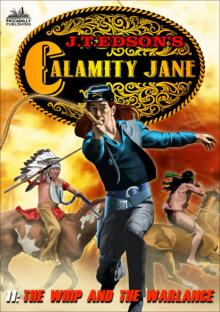 Calamity Jane 11
Calamity Jane 11 The Floating Outift 33
The Floating Outift 33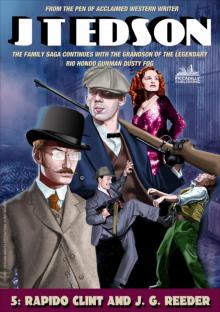 Cap Fog 5
Cap Fog 5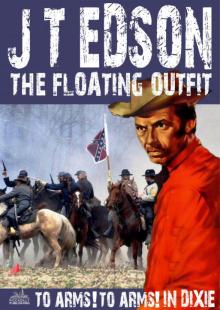 The Floating Outfit 34
The Floating Outfit 34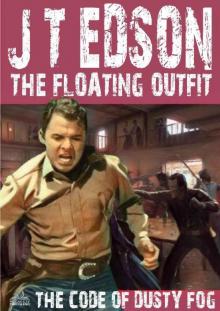 The Code of Dusty Fog
The Code of Dusty Fog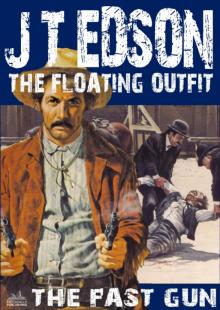 The Floating Outfit 21
The Floating Outfit 21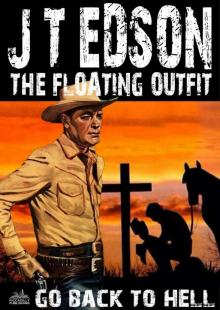 The Floating Outift 36
The Floating Outift 36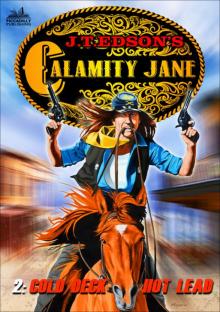 Calamity Jane 2
Calamity Jane 2 Calamity Jane 6: The Hide and Horn Saloon (A Calamity Jane Western)
Calamity Jane 6: The Hide and Horn Saloon (A Calamity Jane Western)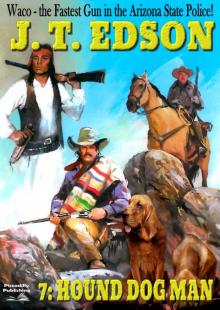 Waco 7
Waco 7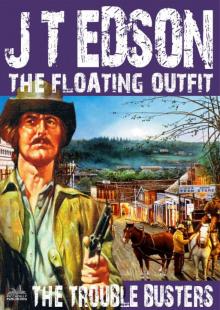 The Floating Outfit 25
The Floating Outfit 25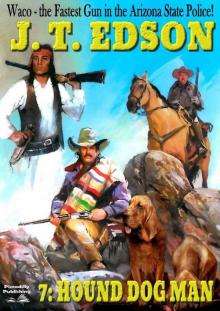 Waco 7: Hound Dog Man (A Waco Western)
Waco 7: Hound Dog Man (A Waco Western)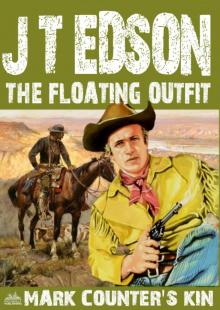 The Floating Outfit 47
The Floating Outfit 47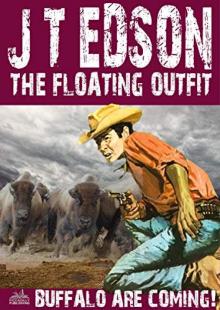 The Floating Outfit 42: Buffalo Are Coming!
The Floating Outfit 42: Buffalo Are Coming!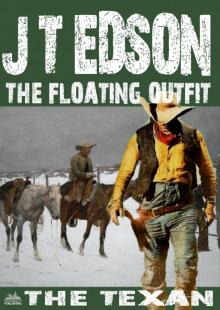 The Floating Outfit 46
The Floating Outfit 46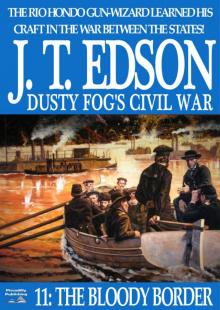 Dusty Fog's Civil War 11
Dusty Fog's Civil War 11 The Floating Outfit 61
The Floating Outfit 61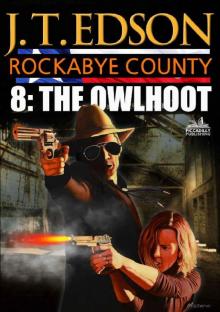 The Owlhoot
The Owlhoot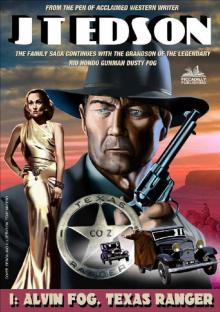 Alvin Fog, Texas Ranger
Alvin Fog, Texas Ranger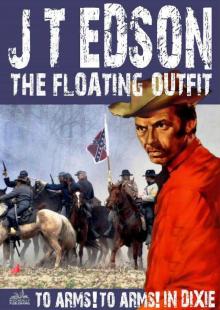 The Floating Outfit 34: To Arms! To Arms! In Dixie! (A Floating Outfit Western)
The Floating Outfit 34: To Arms! To Arms! In Dixie! (A Floating Outfit Western) The Floating Outfit 44
The Floating Outfit 44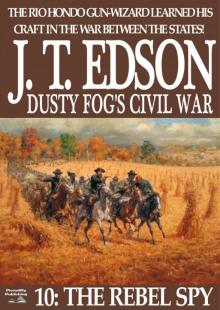 Dusty Fog's Civil War 10
Dusty Fog's Civil War 10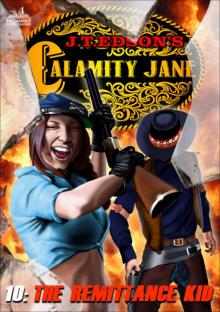 Calamity Jane 10
Calamity Jane 10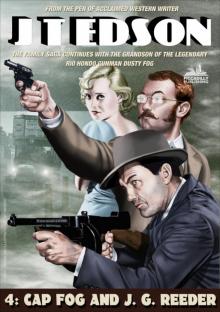 Cap Fog 4
Cap Fog 4 The Floating Outfit 51
The Floating Outfit 51 The Floating Outfit 50
The Floating Outfit 50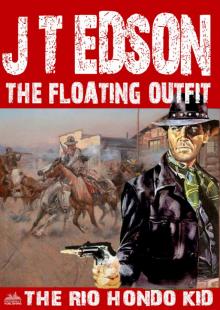 The Floating Outfit 49
The Floating Outfit 49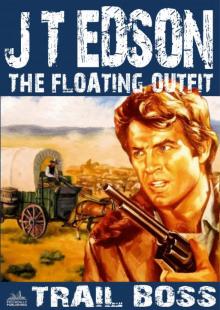 The Floating Outfit 10
The Floating Outfit 10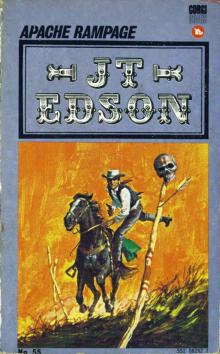 Apache Rampage
Apache Rampage The Floating Outfit 15
The Floating Outfit 15 Ranch War
Ranch War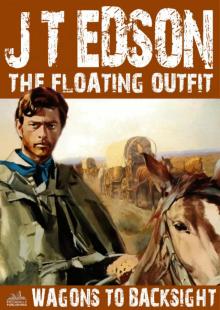 The Floating Outfit 11
The Floating Outfit 11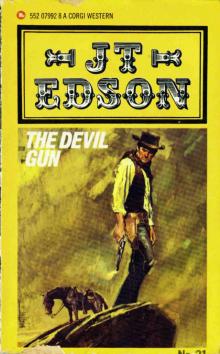 The Devil Gun
The Devil Gun Sacrifice for the Quagga God (A Bunduki Jungle Adventure Book 3)
Sacrifice for the Quagga God (A Bunduki Jungle Adventure Book 3)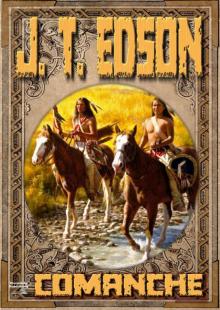 Comanche (A J.T. Edson Western Book 1)
Comanche (A J.T. Edson Western Book 1)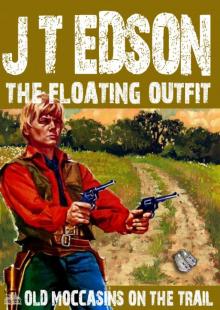 The Floating Outfit 48
The Floating Outfit 48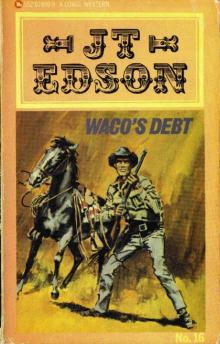 Wacos Debt
Wacos Debt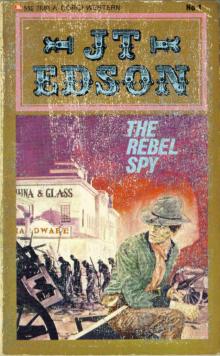 The Rebel Spy
The Rebel Spy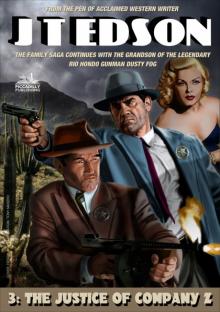 Cap Fog 3
Cap Fog 3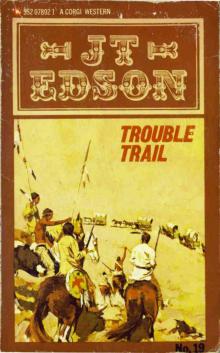 Trouble Trail
Trouble Trail Cold Deck, Hot Lead
Cold Deck, Hot Lead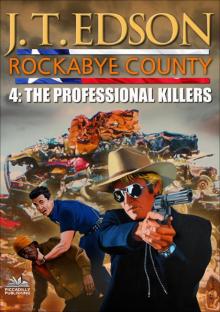 Rockabye County 4
Rockabye County 4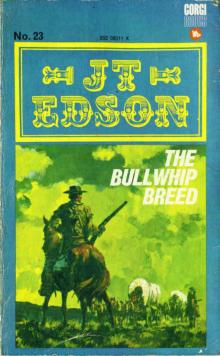 The Bullwhip Breed
The Bullwhip Breed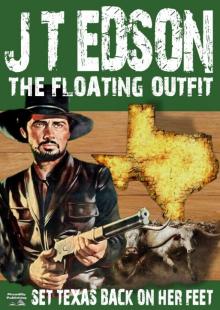 Set Texas Back On Her Feet (A Floating Outfit Western Book 6)
Set Texas Back On Her Feet (A Floating Outfit Western Book 6)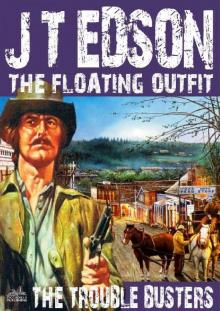 The Floating Outfit 25: The Trouble Busters (A Floating Outfit Western)
The Floating Outfit 25: The Trouble Busters (A Floating Outfit Western)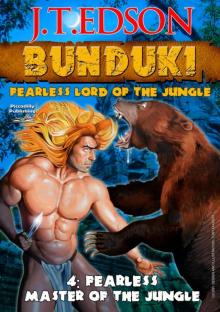 Fearless Master of the Jungle (A Bunduki Jungle Adventure
Fearless Master of the Jungle (A Bunduki Jungle Adventure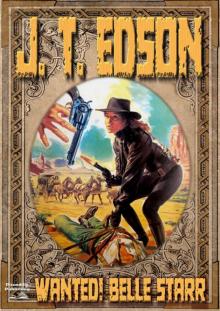 Wanted! Belle Starr!
Wanted! Belle Starr! The Big Hunt
The Big Hunt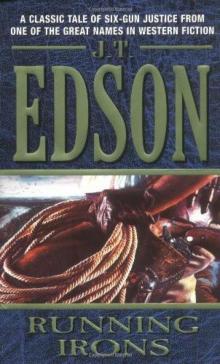 Running Irons
Running Irons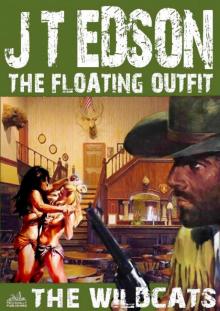 The Floating Outfit 19
The Floating Outfit 19 You're in Command Now, Mr Fog
You're in Command Now, Mr Fog The Floating Outfit 27
The Floating Outfit 27 Texas Killers
Texas Killers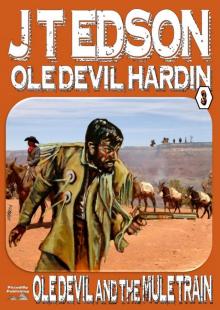 Ole Devil and the Mule Train (An Ole Devil Western Book 3)
Ole Devil and the Mule Train (An Ole Devil Western Book 3)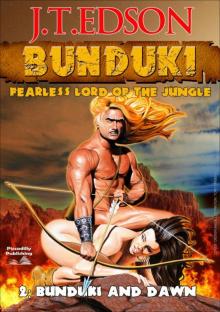 Bunduki and Dawn (A Bunduki Jungle Adventure Book 2)
Bunduki and Dawn (A Bunduki Jungle Adventure Book 2)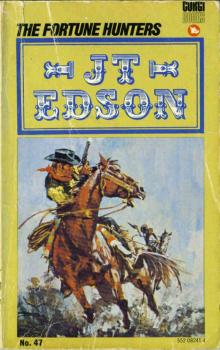 The Fortune Hunters
The Fortune Hunters The Floating Outfit 12
The Floating Outfit 12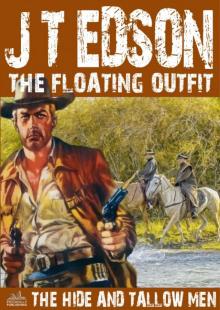 The Hide and Tallow Men (A Floating Outfit Western. Book 7)
The Hide and Tallow Men (A Floating Outfit Western. Book 7)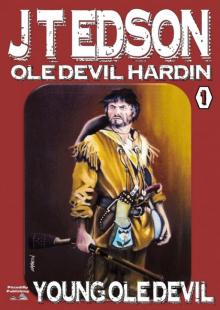 Young Ole Devil
Young Ole Devil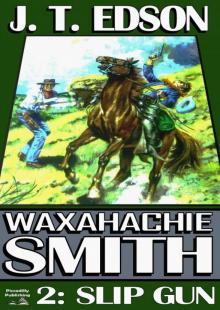 Slip Gun
Slip Gun The Drifter
The Drifter The Floating Outfit 45
The Floating Outfit 45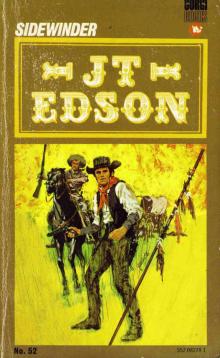 Sidewinder
Sidewinder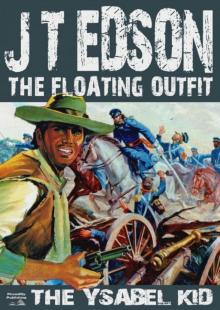 The Ysabel Kid
The Ysabel Kid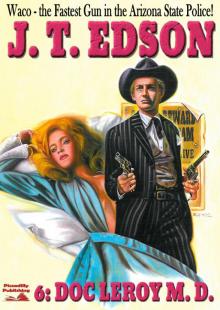 Waco 6
Waco 6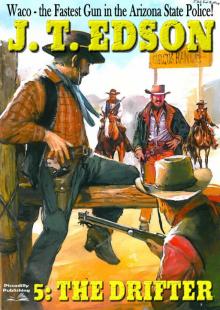 Waco 5
Waco 5 Point of Contact
Point of Contact Under the Stars and Bars (A Dusty Fog Civil War Western Book 4)
Under the Stars and Bars (A Dusty Fog Civil War Western Book 4)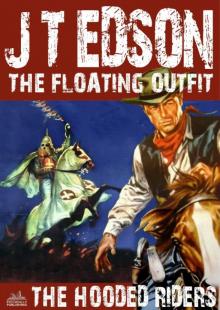 The Floating Outfit 9
The Floating Outfit 9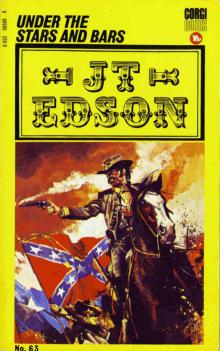 Under the Stars and Bars
Under the Stars and Bars .44 Caliber Man
.44 Caliber Man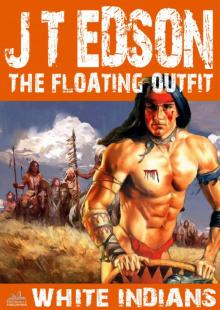 The Floating Outfit 17
The Floating Outfit 17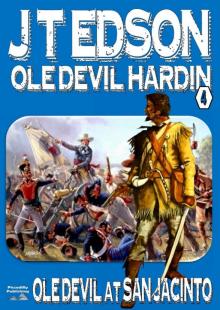 Ole Devil at San Jacinto (Old Devil Hardin Western Book 4)
Ole Devil at San Jacinto (Old Devil Hardin Western Book 4)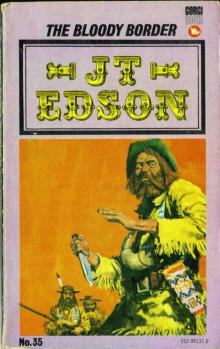 The Bloody Border
The Bloody Border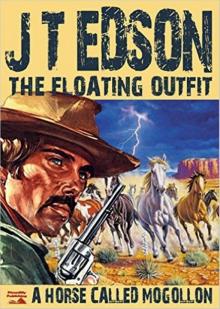 A Horse Called Mogollon (Floating Outfit Book 3)
A Horse Called Mogollon (Floating Outfit Book 3)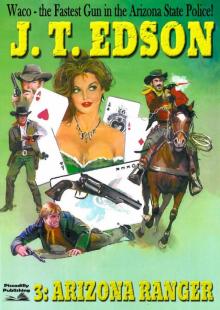 Waco 3
Waco 3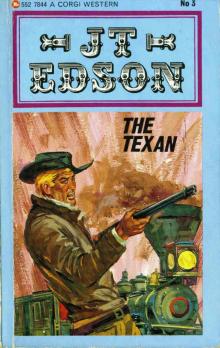 The Texan
The Texan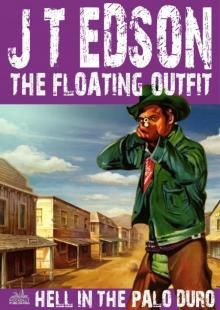 The Floating Outfit 35
The Floating Outfit 35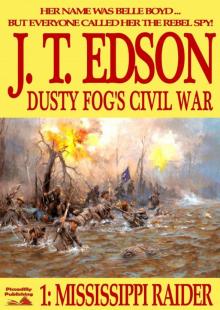 Mississippi Raider
Mississippi Raider The Big Gun (Dusty Fog's Civil War Book 3)
The Big Gun (Dusty Fog's Civil War Book 3)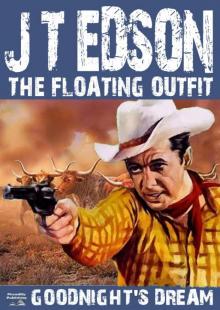 Goodnight's Dream (A Floating Outfit Western Book 4)
Goodnight's Dream (A Floating Outfit Western Book 4) Waco 4
Waco 4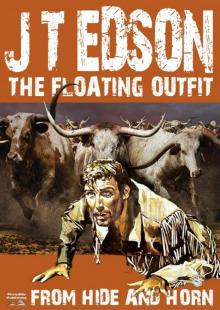 From Hide and Horn (A Floating Outfit Book Number 5)
From Hide and Horn (A Floating Outfit Book Number 5)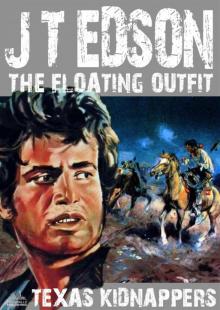 The Floating Outfit 18
The Floating Outfit 18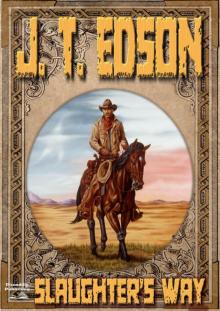 Slaughter's Way (A J.T. Edson Western)
Slaughter's Way (A J.T. Edson Western)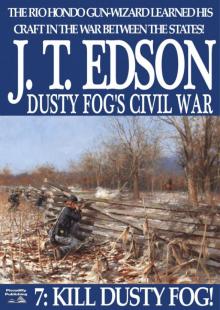 Dusty Fog's Civil War 7
Dusty Fog's Civil War 7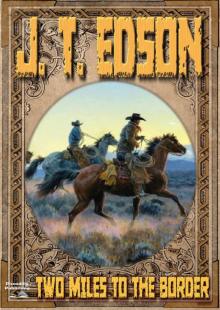 Two Miles to the Border (A J.T. Edson Western)
Two Miles to the Border (A J.T. Edson Western) Trigger Fast
Trigger Fast Waco's Badge
Waco's Badge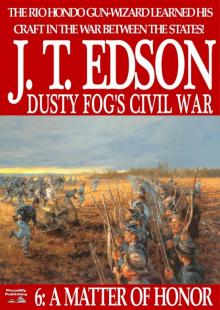 A Matter of Honor (Dusty Fog Civil War Book 6)
A Matter of Honor (Dusty Fog Civil War Book 6) The Half Breed
The Half Breed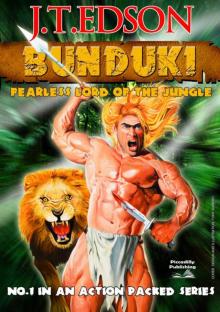 Bunduki (Bunduki Series Book One)
Bunduki (Bunduki Series Book One) Kill Dusty Fog
Kill Dusty Fog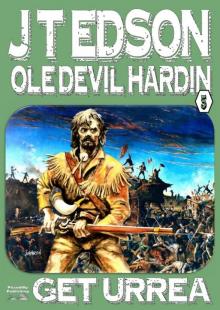 Get Urrea! (An Ole Devil Hardin Western Book 5)
Get Urrea! (An Ole Devil Hardin Western Book 5)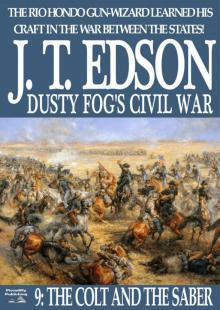 Dusty Fog's Civil War 9
Dusty Fog's Civil War 9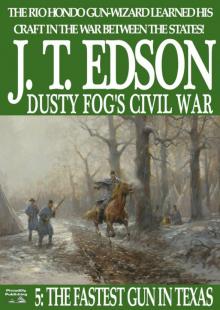 The Fastest Gun in Texas (A Dusty Fog Civil War Book 5)
The Fastest Gun in Texas (A Dusty Fog Civil War Book 5)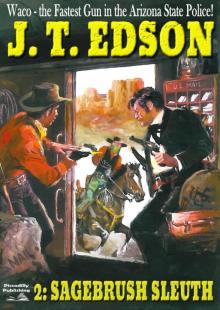 Sagebrush Sleuth (A Waco Western #2)
Sagebrush Sleuth (A Waco Western #2)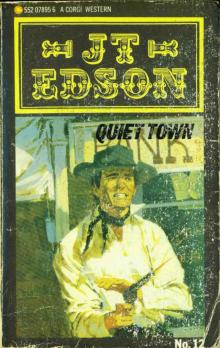 Quiet Town
Quiet Town Is-A-Man (A J.T. Edson Standalone Western)
Is-A-Man (A J.T. Edson Standalone Western)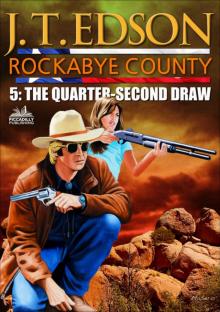 Rockabye County 5
Rockabye County 5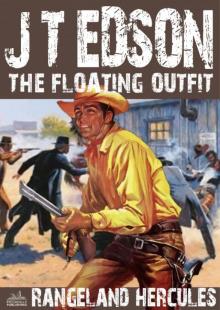 The Floating Outfit 14
The Floating Outfit 14 Cure the Texas Fever (A Waxahachie Smith Western--Book 3)
Cure the Texas Fever (A Waxahachie Smith Western--Book 3) The Floating Outfit 13
The Floating Outfit 13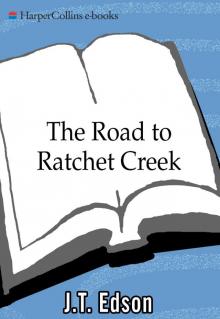 The Road to Ratchet Creek
The Road to Ratchet Creek